|
Overview
If you answered "yes" to any of these questions, you may be surviving rather than thriving. To move from surviving to thriving, focus your efforts on two key elements of your program: leadership and collaboration. Leadership: Take Up Space
Consider some advice from the popular "Traveling Pants" series for young adults... "take up some space, girl".
"I do?" Annik gave Lena an encouraging half smile. "You do. You've got to take up some space, girl." (Girls in Pants: The Third Summer of the Sisterhood, p. 130) Leaders are proactive rather than reactive. They don't wait for a crisis to take action. Instead, they anticipate problems and take charge. Instead of waiting to see what would happen with their school laptop initiative, the media specialist in the photo above volunteered to take a leadership role. Collaboration: A Revolutionary Strategy
"There must be no pulling different ways: we must all hang together.” Always a humorist, Benjamin Franklin added, "We must indeed all hang together, or most assuredly we will all hang separately." Although not as life threatening as the American Revolution, collaboration is essential for a thriving school library media program. What makes you an indispensable part of the school?
|
Invigorating Your Program
|
Connect to Essential School Functions
Flow Throughout the Curriculum. You must show your connection to all school functions including every subject area, grade level, activity, and initiative. Even if it's just a short email volunteering the resources and services of your center, contact is essential. Good circulation is essential to a healthy heart.
Get students involved in connecting historical fiction with historical fact. Ask students to locate primary sources that provide insights into the historical accuracy or the novel.
Become Highly Visible. Be sure that you have a clear, professional physical and virtual presence. When people ask, "who do you run into during the day?".. it should be YOU! Is your website "the" place to be? Are you "seen" in the halls, at meetings, and online? Check out the Springfield High School Library by Joyce Valencia or the Library Media Centers of Westford, MA. Join School-wide Initiatives. What's happening in your school? What's happening at each grade level? What could be happening between grade levels? Seek ways to build schoolwide connections. Maybe you'll promote a schoolwide knitting program that creates afghans for the homeless shelter, create a "buddy readers" area in the library, or serve as "project headquarters" for the "measuring out school" math/science project. You don't need to direct all these projects, instead explore ways to make simple, logical connections.
Recruit Students. Get the students involved in all aspects of your center. From circulation and shelving to peer reading, technology maintenance, and digital development. Who would want to go to study hall, when you could be a "green coat" in the media center?
Address the Digital Divide. Be sure that all children have access to the materials and resources they need. Circulate EVERYTHING. Work with the science department to get GPS devices to check out, work with the English department to check out Alphasmarts, work with principals to get digital cameras and work with everyone to get laptops. Many children have no access to technology and other resources at home. If you can't find funding, collaborate with the local public library and other agencies. Write Grants. Collaborate on a grant project. Become part of a schoolwide team even if you end up doing all the work. Remember the saying - "You can't get a grant if you don't apply for one!" Look for grants through local, regional, and national organizations. If you can't find a grant for your own program, look to your teachers. Nominate a teacher for an award!
Reach Beyond Your School. Become involved with your local museums and natural areas. Develop collaborative projects with your local public library. Bring in guest speakers and local leaders. Consider virtual connections too! Why not a community book club online. Connect to Professional Development. Find ways to connect your program with ongoing professional development activities. For example, the TLC for PLC (Professional Learning Community) project involves teachers in reading and reflecting on current, popular professional development activities.
Invigorate Strategy 1 - Create a list of all school functions, activities, departments, and initiatives.
|
Nurture Critical RelationshipsYou can't do everything. There are only so many hours in every day. However it's essential to nurture critical relationships. Administrative Relationships. Beyond the budget... Figure out what makes the administrator "tick"... then appeal to his/her interests. Know your audience. Are they "into" standards, a particular mandate, a particular content area, or philosophical approach? Use that to get into the door with your first projects. Connect them to things that you know will "go"... as you gain their trust you can begin looking for ways to address your goals. Work with administration to encourage them to promote the idea of collaboration.
Grade Level Partners. You may not have time to work with every teacher at every grade level, but it's essential to build a working relationships at each level. In addition, partnering with one teacher often leads to work with other teachers.
Subject Matter Connections. Focus on information fluency within each subject area. What are the critical information skills that tie to content standards? Use these as the basis for establishing relationships.
Core Supporters. Rally a core set of teachers as center promoters. Use them to disseminate new ideas or recruit for projects. Field test projects on kids who "hang around" your center. All Teachers, All Students. You may never know the impact you have on the lives of children and young adults. Consider ways to involve all children in activities regardless of their challenges. Specifically explore ways to involve special needs educators and teachers in your talented and gifted programs. The photos below show children in a multi-age life skills class. After a large group reading of Dot the Fire Dog by Lisa Desimini, children created portraits of Dot on media center easels.
Every Voice. From the secretary to the groundskeeper, everyone can have a role in the success of your program. Collaborate with the groundskeeper on a butterfly garden for the area outside your center. Team your students volunteers with the school secretary to make a "new student" video. Community Members. From regular volunteers to special guest speakers, nurture member of the greater learning community. Involve community members to particular in book clubs, contribute to art shows, and share their expertise. Make space for people who are truly interested in sharing their time and effort. Face the Whiners. Acknowledge individual teaching styles and approaches.. whiners are whiners! – listen and overcome! Identify the reason for their reluctance:
If people who don’t see an instructional role for the library in their curriculum area (i.e., pe, math), focus on building personal or professional connections first. If teachers want to continue to do what they’ve always done (their lesson plans are laminated), model other options. Make it so easy, they can't refuse.
Promote Everyone. Promote yourself by promoting others. Send photos to the newspaper. Advertise great programs. Display classroom projects in the media center! Check out some students Video Projects. Invigorate Strategy 2 - Create a master list of all the people involved with your school. In what ways can you get everyone involved? |
Establish Exciting Learning Environments
Explore the following ideas for building technology-rich, engaging learning experiences for our students: Authentic Problems, Authentic Products.
Contextual Literature, Contextual Experiences. Quality literature can provide meaningful examples for child and young adults who sometimes fail to see the relevant of what they're learning in science, social studies, or other areas. A work of historical fiction can link the factual information about a time period to specific emotions and perspectives. A realistic fiction novel can help students empathize when they have only limited experience with a topic. Literature circles allow students choice in their reading. In addition students have an environment to share ideas and connections. Consider reading along with your students on a closely related topic so they view you as a reader. Check out a blog on The Breadwinner.
Essential Sources, Essential Questions. Introduce key sources to support student information inquiry. Focus on "big ideas" that challenge student thinking.
Powerful Pictures, Powerful Perspectives. Focus on a visual that will elicit an emotional response. Use this visual as a springboard for asking questions and exploring individual perspectives. Write about the point of view of someone related to the photograph. Be sure to incorporate and identify factual information as well as opinions.
Invigorate Strategy 3 - Re-examine your recent collaborations with teachers. Are you designing engaging learning environments? Consider ways to promote inquiry and the love of information exploration. |
Demonstrate Unique Value
You already have a vital program, you're reading this! You're interesting in the health of your program. You need to collect, document, and share evidence of your success! Build Foundations.
Research on WHY we’re essential Lance, K. C. (2002). How school librarians leave no child behind: The impact of school library media programs on academic achievement of U.S. public school students [Electronic version]. School Libraries in Canada, 22, 3-6. Library Media Program Data Sources Loertscher, D. V., & Champlin, C. (2002). Indiana learns: Increasing Indiana’s student academic achievement through school library media and technology programs. Salt Lake City, UT: Hi Willow Research and Publishing. Lonsdale, M. (2003). Impact of school libraries on student achievement: A review of the research. Australian Council for Educational Research. Available: http://www.asla.org.au/research/ NCES (2002). School Library Media Centers: Selected results from the Education Longitudinal Study of 2002 (ELS:2002). Available: http://nces.ed.gov/pubsearch/pubsinfo.asp?pubid=2005302 Scholastic (2006). School Library Work: 2006 Edition. Available: http://scholastic.com/librarians/printables/downloads/slw_2006.pdf Technology-based Learning and Evidence-based Practice Plan Leadership Strategies.
Invite, Recruit, Welcome. Establish an inviting atmosphere for teaching and learning. A comfortable place to read, write, and think. What physical and virtual spaces are your designing to provide a positive, inviting environment? Make your center THE place to be. Open an IMC Cafe. Read A Jolt of Java.
Stress Comfort Foods, Comfort Sources, Comfort Collaborations.
Select Effective Strategies.
Empower Yourself, Your Teacher, Your Learners. Let your students and teachers take the lead. Involve them in ongoing center activities, displays, and projects. Minimize rules and increase involvement. Let students make decisions. Collect Evidence. Reflect. Think about what works and what didn't work. Use a blog to reflect on your experiences. Need more Ideas? Check out the blogs!
Celebrate and Share Successes. Promote students and teacher accomplishments. Send photos to the local paper. Highlight students and teachers at the website. Share what people are reading, writing, and thinking. Write and publish an annual report regardless of whether it's required. Check on John McDonald's Middle School Library Media Center Annual Report (word document). Advocate. Be an advocate for reading, writing, thinking, and intellectual freedom. Go to The School Library Media Specialist: Advocacy. Become Indispensable. This means that you and your center are tightly woven into the heart of your school. The research connections collaboration, technology, and leadership. Your plan must include these three areas to impact student achievement. Invigorate Strategy 4 - Create a list of the unique contributions you and your program make at your school. How do you impact teaching and learning? If your school board asked you to defend your program, what would you say and do? An article in Newsweek, The Good Heart (Oct. 3, 2005), stated that mounting evidence suggests that psychological outlook is just as important to health as diet and exercise. Now, how might those factors be interpreted to shape a healthy school library media program? Yes, I know many school media specialists (especially myself) could lose some weight... but that is not what I mean. Think about the health of your school library media center in terms of diet, exercise, and outlook - - the diet of the library (inputs, what is taken in), exercise (activities, what is done), and outlook (attitudes, climate, and atmosphere). Think about your center, your resources, your program, and yourself. |
Further ReadingResources for Children and Young AdultsBrashares, Ann. Sisterhood of the traveling pants series. Fleming, Candace (2003). Ben Franklin's almanac: being a true account of the good gentleman's life. Antheneum. Ages 10-14. Resources for EducatorsCallison, D. (2003). Key words, concepts and methods for information age instruction: A guide to teaching information inquiry. Baltimore, MD: LMS Associates. Enough Already?: Blazing New Trails for School Library Research: An Interview with Keith Curry Lance, Director, Library Research Service, Colorado State Library & University of Denver. (2005). School Library Media Research. Available: http://www.ala.org/ala/aasl/aaslpubsandjournals/slmrb/editorschoiceb/lance/interviewlance.htm Harada, V.H. and Yoshina, J.M. (2004). Inquiry learning through librarian-teacher partnerships. Worthington, OH: Linworth Publishing, inc. Harris, F.J. (2003). Building learning communities using technology. In B.K. Stripling & S. Hughes-Hassel. (Eds.). Curriculum connections through the library (pp. 171-187). Westport, CT: Libraries Unlimited. Logan, Debra Kay (2000). Strategies for Developing Teacher Contacts. Available: http://www.deblogan.com/pester.html Johnson, Doug (April/May 2003). Top ten things baby teachers should know about school libraries. Library Media Connection. Available: http://www.doug-johnson.com/dougwri/baby.html Lance, Keith Curry, Hamilton-Pennell, Christine, & Rodney, Maria (April 2000). How School Librarians Help Kids Achieve Standards: The Second Colorado Study (April 2000),” Colorado State Library, Colorado Department of Education. Available: http://www.lrs.org/documents/lmcstudies/CO/execsumm.pdf McGregor, J. (2003). Collaboration and leadership. In B.K. Stripling & S. Hughes-Hassel. (Eds.). Curriculum connections through the library (pp.199-219). Westport, CT: Libraries Unlimited. Milbury, Peter (May/June 2005). Collaboration: Ten important reasons to take it seriously. Knowledge Quest on the Web. Available: http://www.ala.org/.../335milbury.htm Preddy, L.B. (2003). Collaborating for student success. Available: http://www.ciconline.com Hartzell, G. N. (1997, November). The invisible school librarian: Why other educators are blind to your value. School Library Journal, 43(11), 24-29. Logan, D.K. (2000, May/June). Dear student teacher, you are invited…Educating the future educators. Book Report, 19(1), 15-17. Montgomery, P.K. (1991). Cognitive style and the level of cooperation between the library media specialist and classroom teacher. SLMQ, 19(3). Available: http://www.ala.org/.../selectmontgomery.htm Small, Ruth (June 2002). Collaboration: Where does it begin? Teacher Librarian, 29(5). Available: http://www.ciconline.com/.../Student_Success.pdf Wolcott, Linda Lachance (1994). Understanding How Teachers Plan: Strategies for Successful Instructional Partnerships. SLMQ, 22 (3). Available: http://www.ala.org/... /selectwolcott.htm Valenza, Joyce Kasman. Virtual Library: Top Ten Things Teachers Should Know to Better Understand Network Behavior and the Web. Springfield Township High School. Available: http://mciu.org/~spjvweb/topten.html
|
| Developed by Annette Lamb, 11/05. |
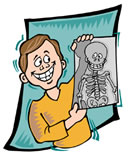
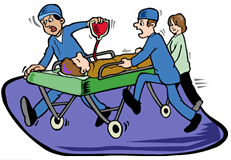 Do you rush from one emergency to the next?
Do you rush from one emergency to the next? School library media specialists play a wide range of roles from helping students select materials to meet their learning needs to presenting collaborative curriculum initiatives to the school board. Their leadership activities include building enthusiasm, setting and striving for realistic goals, embracing change, being proactive, and taking the first step. Although there are many leadership books that lecture about the critical characteristics of effective leaders, it's important to remember that leadership begins with personal and professional empowerment.
School library media specialists play a wide range of roles from helping students select materials to meet their learning needs to presenting collaborative curriculum initiatives to the school board. Their leadership activities include building enthusiasm, setting and striving for realistic goals, embracing change, being proactive, and taking the first step. Although there are many leadership books that lecture about the critical characteristics of effective leaders, it's important to remember that leadership begins with personal and professional empowerment. 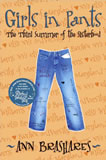 "Then figure out how to do it." Annik put her hand, briefly, on Lena's elbow. "Lena, I think you could do something good. I think you have talent, possibly a lot of it, and I don't say that lightly. I want you to try. I can see it's what you love. But I can't fight for you. You have to fight for yourself."
"Then figure out how to do it." Annik put her hand, briefly, on Lena's elbow. "Lena, I think you could do something good. I think you have talent, possibly a lot of it, and I don't say that lightly. I want you to try. I can see it's what you love. But I can't fight for you. You have to fight for yourself." At the second Continental Congress, John Hancock stressed the importance of collaboration. He stated,
At the second Continental Congress, John Hancock stressed the importance of collaboration. He stated, 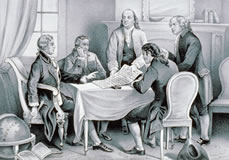 Let's use primary sources as an example. Primary source documents play a central role in the Social Studies curriculum. The school library media specialist plays a critical role in connecting critical information skills with primary sources including locating, evaluating, and interpreting these materials. Many classroom teachers are not aware of how easily primary sources can be misinterpreted.
Let's use primary sources as an example. Primary source documents play a central role in the Social Studies curriculum. The school library media specialist plays a critical role in connecting critical information skills with primary sources including locating, evaluating, and interpreting these materials. Many classroom teachers are not aware of how easily primary sources can be misinterpreted. 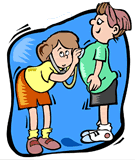 Whether you've been at your school for 4 months or 40 years, let's explore four ways to invigorate your program.
Whether you've been at your school for 4 months or 40 years, let's explore four ways to invigorate your program. The school library media center supports student achievement across the curriculum. You and your program are at the heart of the school. Resources and information flow across all programs. If students aren't information fluent, they won't be successful.
The school library media center supports student achievement across the curriculum. You and your program are at the heart of the school. Resources and information flow across all programs. If students aren't information fluent, they won't be successful. 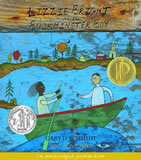 Tie to Standards. Connect your program activities to specific learning standards. Every project should have both an information standard and a content area standard indicated. Address multiple standards at once. Remind teachers that information fluency is essential across the curriculum.
Tie to Standards. Connect your program activities to specific learning standards. Every project should have both an information standard and a content area standard indicated. Address multiple standards at once. Remind teachers that information fluency is essential across the curriculum. 


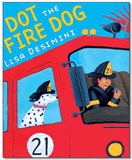
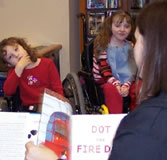
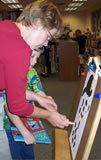

 The role of the school library media specialists is evolving. As educators, we've moved from the "sage on the stage" to the "guide on the side." In recent years, our role has shifted again to the role of "collaborator at the core" working side-by-side with both teachers and students. We learn from each other and immerse ourselves in the teaching/learning environment. School library media specialists act as information scientists modeling the inquiry process.
The role of the school library media specialists is evolving. As educators, we've moved from the "sage on the stage" to the "guide on the side." In recent years, our role has shifted again to the role of "collaborator at the core" working side-by-side with both teachers and students. We learn from each other and immerse ourselves in the teaching/learning environment. School library media specialists act as information scientists modeling the inquiry process. 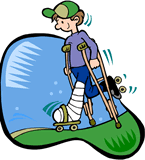 Kids will be kids. Give them information tools and quality guidelines, then turn them loose on an information-rich problem. They'll find a creative solution.
Kids will be kids. Give them information tools and quality guidelines, then turn them loose on an information-rich problem. They'll find a creative solution. 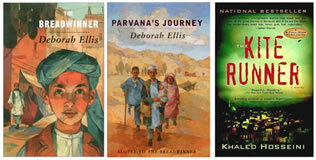
 Diverse Evidence, Diverse Conclusions. Real-world problems are ill-structured and often end up with many possible solutions. Students must learn to gather and evaluate evidence from many sources and weight possible conclusions.
Diverse Evidence, Diverse Conclusions. Real-world problems are ill-structured and often end up with many possible solutions. Students must learn to gather and evaluate evidence from many sources and weight possible conclusions.  Dynamic Data, Dynamic Decisions. Data can be interpreted many ways. Students need experiences analyzing and synthesizing data, identifying trends, drawing inferences, predicting future trend, and drawing conclusions. Read Will Hobb's
Dynamic Data, Dynamic Decisions. Data can be interpreted many ways. Students need experiences analyzing and synthesizing data, identifying trends, drawing inferences, predicting future trend, and drawing conclusions. Read Will Hobb's  School library media specialists have a unique place in the life of the school. The learning community needs to be aware of your unique perspective and value.
School library media specialists have a unique place in the life of the school. The learning community needs to be aware of your unique perspective and value.